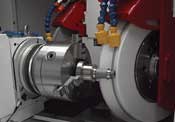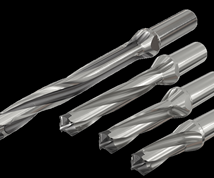Hot Runner Technology for Bio-Resins
The polylactic acid trend, material benefits and challenges to injection molding and injection mold design.
Booming populations and the growth of the global economy are creating increased demand for plastic injection molded products. But plastic parts also are contributing to over-capacity in landfills and a nationwide littering problem. At the same time, oil resources are at risk, and oil and gas prices are on a steep rise.
All these issues are driving efforts to make plastic renewable and compostable by adding corn starch and other organic fillers.
Featured Content
The PLA Solution
Enter Polylactic Acid (PLA), one of the main compostable materials that have surfaced in recent years. It uses fermented natural plant sugars to create a clear plastic that can be shaped into a variety of bottles, containers, trays, film and other packaging.
PLA was brought to market in the form of extruded film stock and fibers. Injection molding grades of PLA have recently become available. Market applications mirror that of General Purpose Poly Styrene (GPPS) with some characteristics of Polyethylene Terephthalate (PET).
Challenges
The primary challenge of processing injection-grade PLA is that the material reacts poorly to normal polystyrene-type processing. PLA and PLA blends are sensitive to shear and thermally generated heat. When residence times are too long, PLA can break down on a molecular level—causing material yellowing and sometimes a loss of critical mechanical properties in a part.
Another limitation of PLA is it doesn’t shear thin. When velocities and pressures are too high, problems may occur when processing thin-wall parts over long flow distances. PLA flows better at slow velocities and low pressures, keeping the integrity of the material and part intact.
To help avoid these problems, care must be taken in sizing the barrel capacity of the machine. Full shot capacity of the molded parts and hot runner should be at least 50 percent of the barrel capacity. This helps avoid unwanted residence time and thermal heat, and increases material and part strength.
Because PLA conducts heat more slowly than Polystyrene, it naturally produces a higher gate mark, or “vestige,” than similar polystyrene parts. This occurs for several reasons. PLA requires shear-free melt channels, making through-channel tips more effective than point-tips that divert the channel. Through-tips are less likely to leave improper color streaks on your part as well, but they also add to the likelihood of higher gate marks. To reduce the gate mark height, heat needs to be delivered to the gate as closely as possible and the heat-sensitive nature of PLA makes that difficult.
Designers must consider cooling challenges as well. PLA dissipates heat more slowly than traditional materials, thus requiring a longer cooling time. This means that material that isn’t flushed out of the hot runner barrel remains in the manifold for a longer time, exposing it longer to heat.
Cavity Considerations
Molding applications such as packaging, disposable dinner/housewares and disposable containers lend themselves to creating molds with a large number of cavities. High numbers of cavities usually require multi-level hot runner manifolds that produce a large internal runner volume. Compensating by reducing runner channel diameter creates increased shear, which is, of course, undesirable. Because of this, molding with PLA may require fewer cavities per mold for thin-wall part applications.
When molded properly, PLA makes an excellent living hinge, but be aware that filling PLA across a very short, thin wall section may be problematic without prototyping your molded part design first.
Acidic Qualities
Remember, the “A” in PLA stands for “acid.” When acid is involved, there’s a need for corrosion-free surfaces. Over time, the acidic residue can plate out of the material. Hot runners and nozzles should be designed to minimize areas where this residue can build up. These components also should be easy to clean.
The same holds true for the core and cavity of a mold. A good material choice is high-chromium tool steel, which is more resilient to chemical corrosion over time.
A PLA Hot Runner Solution
To date, only one hot runner manufacturer makes a hot runner nozzle assembly optimized for processing starch-based resins such as PLA. Prior to that introduction, molders of PLA had to rely on special-ordered, corrosion-resistant nozzle components that could withstand acid.
Nozzle assemblies aren’t typically stocked “standard” by hot runner manufacturers in an “all” or “near-all” corrosion-resistant format. Further, most hot runner nozzle assemblies are typically geared for the mass market—and not necessarily suitable for the demanding requirements of PLA resin discussed in this article.
PLA-optimized hot runners are carefully manufactured with highly wear-resistant and corrosion-resistant components, PLA suitable thermal profiles, shear-minimizing nozzle tips and considerations for low pressure and unique cool-
ing requirements.
Despite the numerous challenges presented here on the processing of PLA, there will no doubt be a growing demand for bio-based and biodegradable resin in the future. Make sure when choosing a hot runner system for processing of PLA and other bio-based resins that your supplier can address these material and design challenges to ensure a successful, eco-friendly, molded part.
RELATED CONTENT
-
Plastic Prototypes Using Silicone Rubber Molds
How-to, step-by-step instructions that take you from making the master pattern to making the mold and casting the plastic parts.
-
Hot Runners and Valve Gate Systems: A Moldmaking Team
Valve gates provide several advantages when using hot runners, including better appearance, safety and an overall better product. There are several types of valve gates, and it is important to choose the right one for your project.
-
Four Key Uses of Prototyping
Prototyping helps evaluate and test a design, clarify production costs, sell a product and secure patents.















